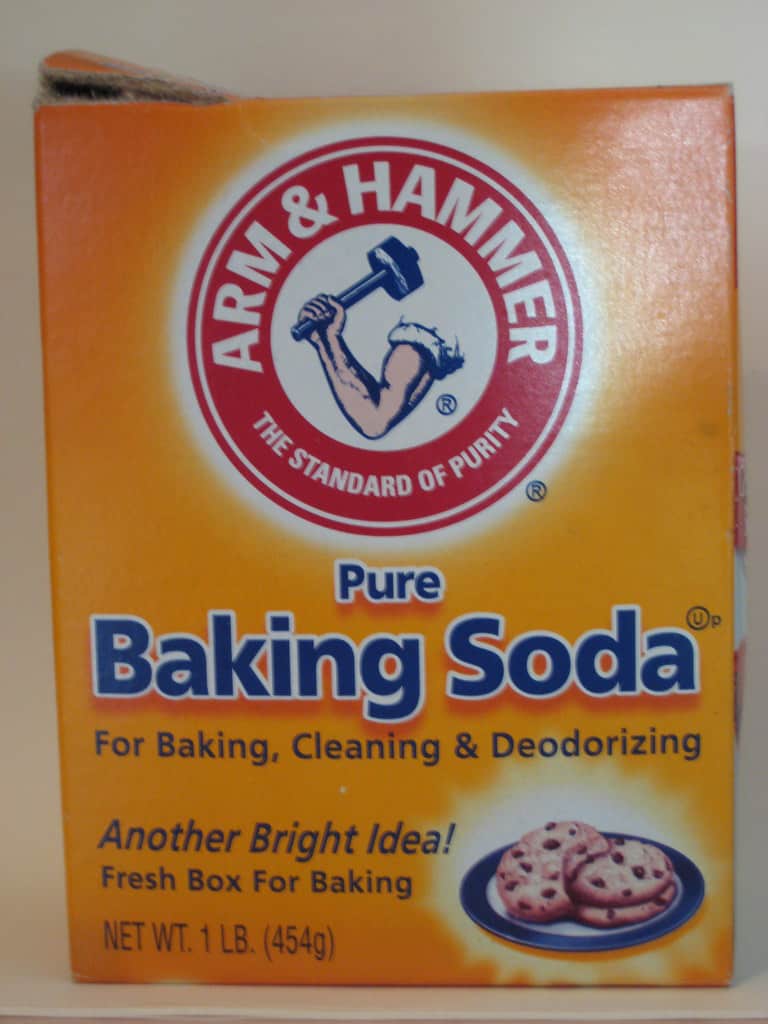You’re faced with a dilemma: your pizza stone is riddled with pizza crusts, smudges, and stains. What now? Calm down—cleaning a pizza stone isn’t as daunting as it may seem. And no, you don’t have to abandon your beloved cooking tool. With the right techniques and a little bit of patience, your stone will be back to its pristine condition in no time.
So, you’re probably wondering ‘how to clean a pizza stone’? Here’s the thing: it’s essential to remember that pizza stones, made from porous stone, hold on to moisture. So, using dish soap or soaking it in water is a huge no-no. Instead, only use a damp cloth to wipe away apparent dirt, or a stone brush to clear stubborn, stuck-on food. Preventing moisture buildup protects your stone from cracks due to drastic temperature changes when it comes into contact with a hot oven.
Besides, given the fact that pizza stones can absorb any liquid they come into contact with, they’ll also take in any dish soap you use during cleaning. This can alter the taste of your future pizza dough masterpieces, and nobody wants a soapy tasting pizza. So, cleaning your stone with just hot water and a baking soda paste does the trick, ensuring you keep serving tasty pizzas off a clean stone every time.
Understanding Your Pizza Stone

We’ve all been there. You’ve whipped up a stellar batch of pizza dough, laid out your favorite toppings, and now it’s time to slide that masterpiece onto your trusty pizza stone. After all, nothing quite beats a crispy crust that only a hot stone in a hot oven can deliver.
Your pizza stone is not just a slab of porous material—it is your passport to delightful, bakery-quality pizza crusts right in your home kitchen. Recognizing this, isn’t it right to ensure that your stone is well-taken care of? This includes understanding how to clean your pizza stone properly.
Pizza stones are crafted from a variety of porous stone materials, including clay, ceramic, cast iron, and even cordierite. Because of their porous nature, these stones easily absorb oils and food residue from the pizza, leading to unsightly pizza stone stains over time. Additionally, oils and food debris can cause your stone to smoke during the baking process, which may negatively impact the flavor of your pizza.
The key to the longevity of your pizza stone lies in its care strategy. From a no-fuss wipe down with a damp cloth after each use, to a full-blown deep clean with baking soda and water, your pizza stone cleaning process can be adapted based on how dirty it is. Be mindful though, harsh detergents or too much water can damage the stone’s porous surface.
Given the likelihood of a stone absorbing too much moisture, it’s crucial to let your pizza stone dry completely. Air-drying is the most effective way to do this so that trapped water and moisture can evaporate. If you put a damp stone into a hot oven, you risk cracking it due to temperature shock.
Proper maintenance of your pizza stone helps keep it in top shape for those delectable, crispy crusts. It’s not just about cleaning but also about proper usage. More on this and your step-by-step guide to cleaning your pizza stone will follow in the next sections. Remember, your love for pizza starts with your pizza stone, and understanding it is the first step to make your delicious homemade pizza endeavors successful.
Assembling the Essentials for Cleaning

Before we dive into how to clean a pizza stone, let’s address the primary tools you’ll need. Emphasis on minimal: no need to dive in your kitchen cabinets for complicated stuff, everything you need is probably already there. Primarily, you will need a stone brush and a damp cloth. These two simple tools will help you get rid of most of the junk that’s sticking to your pizza stone.
No stone brush? No problem! Swap it out with a nylon-bristled brush or a rubber or plastic spatula. Do steer clear of metal utensils though, as they could damage the stone’s porous surface.
Speaking of the surface, your pizza stone is a porous material which means it absorbs everything, from oil to dish soap. That’s why it’s essential to stick to baking soda when you’re handling those stubborn pizza stone stains. It’s a natural cleaner and won’t leave a soapy residue, keeping your future pizza crusts safe from unwanted flavors!
Additionally, you’ll need some hot water for a thorough clean. A gentle scrub with just a bit of water on your brush should dislodge any stuck-on food. However, remember not to soak your stone or it might absorb too much moisture. Also, never use a dishwasher to clean your pizza stone. It’s not dishwasher safe and the combination of intense hot water and harsh detergents can wreak havoc on your stone.
Finally, to clean a pizza stone with minimal fuss and maximum effect, you’ll need patience. Let your stone air dry completely after each cleaning. Trapped water or damp spots could lead to temperature shock, cracking your precious stone when exposed to high heat.
Remember though that a certain amount of discoloration and staining is normal and to be expected with porous stones. Various pizza crusts and other foods will leave their mark over time, but as long as the surface is free of food debris, your stone is clean and ready for the next pizza night! The goal is not to make your pizza stone look like a polished piece of marble but to keep your pizza stone clean longer and produce consistently delicious, crispy crusts.
Stick with these cleaning rules and you’ll have a pizza stone that’s well-maintained for years to come. Then sit back and let those mouth-watering pizza scents waft through your kitchen!
Exploring the Do’s and Don’ts of Cleaning a Pizza Stone

Mastering how to clean a pizza stone can certainly help you uphold its quality, ultimately helping you attain the coveted crispy crust on your pizzas. Here, we dive into the key do’s and don’ts to guide you on your cleaning journey.
Porous stone, such as a pizza stone, harbors oil and food leftovers, leading to burns or unappetizing flavors. It’s crucial to clean these off right after use. However, refrain from using soap or dish cleaners. Your stone’s porous surface may absorb them, tainting your next pizza dough. Instead, use a damp cloth to wipe off any remnants.
For stubborn grime, you need an extra hand. Baking soda is an effective yet gentle solution. Make a paste with hot water and carefully scrub off the stuck-on food with a stone brush, not a metal one, to avoid scratch damages. Then, rinse it under warm water and use a rubber or plastic spatula to scrape off any remaining debris.
Never immerse your pizza stone in water. Porous materials can absorb the liquid, making the stone prone to thermal shock from a trapped water explosion, especially when put in a hot oven. Thus, opt for a wipe with a damp rag instead.
Stains on your stone like darker pizza stone stains and stuck-on bits, aren’t necessarily bad. They can help season the stone, giving you a crispier crust! So, you needn’t feel compelled to rub them off until the stone is squeaky clean.
Post-scrubbing, let your pizza stone dry completely. This is arguably the most important part of how to clean a pizza stone. Lay it out to air dry before storage or put it back in the oven to evaporate the remaining moisture. Decidedly, don’t speed up the drying with a towel or dryer as it can leave fluff or encourage too much moisture, which could ruin your next pizza crust.
Lastly, keep your pizza stones away from chemical cleaning solutions and dishwashers. Harsh chemicals can wear off the rock while dishwashers might cause cracks.
Honoring these do’s and don’ts not only keeps your pizza stone clean and long-lasting but also guarantees a savory, perfectly cooked pizza every time. Be sure to embrace this step-by-step process and look forward to the best homemade pizzas you’ve had yet!
Step-by-Step Guide: How to Clean a Pizza Stone

Let’s dive into a step-by-step process on how to clean a pizza stone, extend its life, and help it yield countless crispy crusts.
First, cool down the pizza stone completely before you clean it. Hot pizza stones are known to have a bit of a temper. Subjecting a hot stone to cold water can cause temperature shock which may result in cracking your stone. So, always remember to let it rest after a pizza session.
Second, opt to scrape off any stuck-on bits of food or cheese using a handy tool like a plastic or rubber spatula or a dough scraper. These kitchen staples can be very effective, especially for stubborn, tough bits of pizza crust that refuse to go away. Now, you may think about reaching for the metal spatula but resist the urge, as metal utensils may risk scratching the stone’s porous surface.
At this point, you might spot some darker stains on your stone. But don’t stress! Darker stains are just a sign of a well-used pizza stone, and they won’t affect the performance.
Now it’s time for a deep clean. Avoid soaking the stone in water as it’s made of porous material that will sip in too much moisture if given a chance. Instead, you’re going to focus on gentle methods.
Here’s a helpful tip: use baking soda. That’s right—you can create a baking soda paste with just a bit of water. Apply this paste on the stains or spots with a clean cloth or even your fingers and rub it in a gentle, circular motion.
One thing to avoid is strong cleaning chemicals or soap. Remember, your stone is like a sponge due to its porous nature and it can absorb the taste of soap just like it absorbs the aromas of your pizzas. Instead, just a dab of baking soda will do the trick.
Finally, rinse your stone with warm water, making sure to remove any remaining baking soda residue. Once it’s clean, dry your pizza stone thoroughly with a clean towel.
One last word of caution—never, and we repeat, never place a pizza stone still damp inside a hot oven. The quick evaporation of water trapped within that porous stone can lead to the pitfall of cracks. That’s why it’s crucial to let your stone air dry completely, which could take about an hour or more.
Final Thoughts
Maintaining your pizza stone is significant if you want to keep churning out delicious, crisp pizza crusts. Cleaning it the right way is critical because pizza stones are porous and sensitive to moisture and harsh detergents. Using just a damp cloth or a baking soda paste can keep your stone in good shape for longer. Also, remember to avoid soaking your stone in water or cleaning it with soap to protect it from moisture build-up and unwanted flavor absorption. By sticking to a simple but effective cleaning routine and understanding the peculiarities of your pizza stone, you ensure it stays effective and safe to use for years to come.
Ptehr suggested articles:

